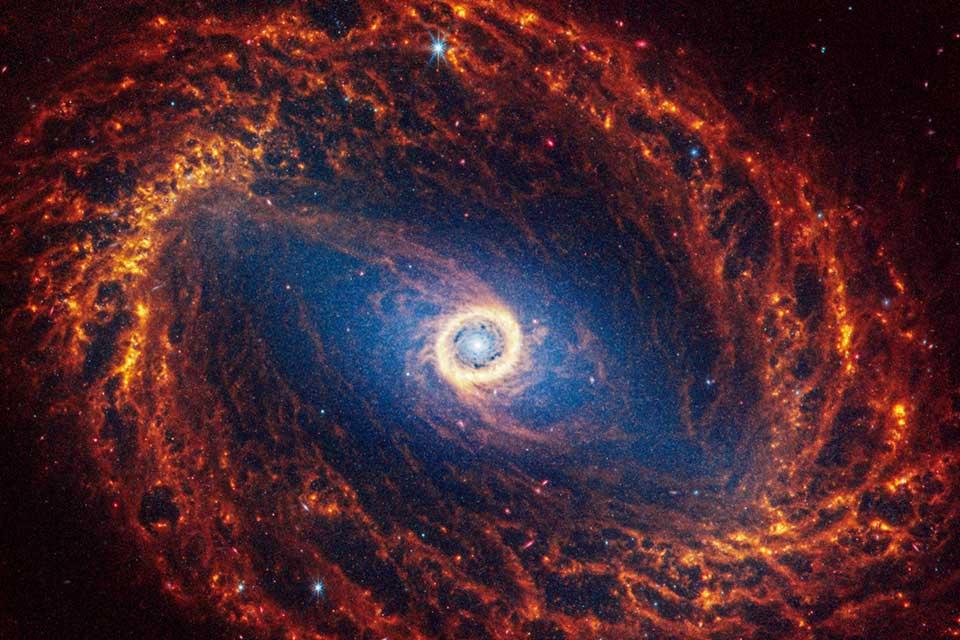15. Star Formation & the ISM#
15.1. Dust Glows in the IR#
Using Wien’s law (see 5.3.2) we can measure the temperature of an object from its spectrum, including dust. Wien’s law relates an objects tempearture to the peak wavelength \((\lambda_{\rm peak})\) of its blackbody curve.
For warm dust at a temperature of \(100\ {\rm K}\):
which lies in the infrared. The red part of the spectrum ends at about \(700\ {\rm nm}\), where wavelengths \(\gtrsim 700\ {\rm nm}\) up to \(1\ {\rm mm}\ (\text{or } 10^6\ {\rm nm})\) define the IR portion of the spectrum.
For cooler dust, at \(10\ {\rm K}\):
the peak wavelength still lies in the infrared.
The temperature and the peak wavelength are inversely proportional. If the temperature decreases, the peak wavelength increases. We see that for the cooler dust that is common for the ISM, the peak wavelength is in the far-IR region of the EM spectrum.
def Weins_law_temp(T):
#temp in K
return 2.9e6/T
#For warm dust at 100 K
lamb_peak = Weins_law_temp(100)
print("The peak wavelength for warm dust is %1.1e nm or %d um." % (lamb_peak,lamb_peak/1e3))
#For cool dust at 10 K
lamb_peak = Weins_law_temp(10)
print("The peak wavelength for cool dust is %1.1e nm or %d um." % (lamb_peak,lamb_peak/1e3))
The peak wavelength for warm dust is 2.9e+04 nm or 29 um.
The peak wavelength for cool dust is 2.9e+05 nm or 290 um.
15.2. Properties of Protostars#
A star’s luminosity depends on the radius and surface temperature of a star. We can compare the luminosity of the Sun with a protostar through the ratio of this relationship to get,
where the subscript \(\rm proto\) refers to the protostar and \(\odot\) refers to the Sun. See 5.3.1 or 13.3 for review of the symbols (\(L\), \(R\), or \(T\)).
Suppose that when the Sun was a protostar, the protostar’s radius is \(10\times\) that of the Sun now (or \(R_{\rm proto} = 10\ R_\odot\)) and has a surface temperature of \(3300\ {\rm K}\). What would its luminosity have been?
We can apply our formula directly. We find that,
The Sun was \({\sim}10.6\times\) more luminous as a protstar than it is now. From the H-R diagram of protostars, as a \(1\ M_\odot\) star approaches the main sequence, it moves down (toward lower luminosity) and to the left (toward higher surface temperature).
T_sun = 5777 #average surface temperature of the Sun in K
T_proto = 3300 #surface temperature of the protostar
R_proto = 10 #radius of the protostar in solar radii
L_ratio = R_proto**2*(T_proto/T_sun)**4
print("The protostar is %2.1f times brighter than the Sun." % L_ratio)
The protostar is 10.6 times brighter than the Sun.


